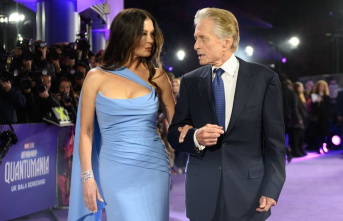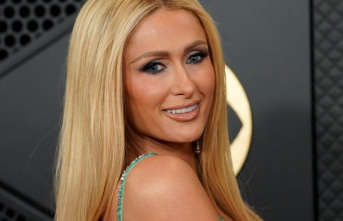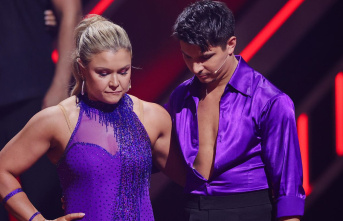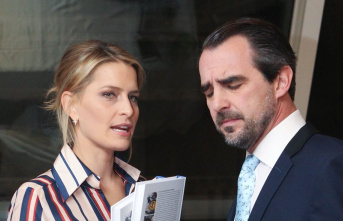I pursue the comanche! From time to time I have the feeling that I am in that tribe, famous for the ferocity of their warriors, until in the soup. The last time, very unexpected, has been in the reading of Dances with wolves, the novel, newly reissued by Valdemar/ Border (was published by Grijalbo Mondadori in 1991), on which is based the popular and oscar-winning (seven awards) movie 1990 dances with wolves, Kevin Costner. It turns out that in the book of the indians, lords of the plains that hit the cavalry officer and protagonist whose life is incorporated enthusiastically are not sioux, as in the film, but, in fact, comanches.
The fact has surprised me a lot because of the sioux to the comanche there is a good stretch, although both peoples were part of the culture of the great plains (one north and the other south), and share features, such as the nomadic existence, the dependence on the buffalo and the expertise to horse riding, as well as the friendship with the cheyenes, occasional in the case of the comanche, done more with the kiowas. The comanches have always been more bad press that the sioux, besides being lower; in fact they are of the indians with the worst reputation, and that it was not they who killed Custer. Sober, minimalist, hard, considered the spartans of the plains, vengeful, capable of a savagery and cruelty that can be creepy and careless in hygiene, they are not the people you'd like to spend a season. Dances with wolves, the novel, the idealized much, unlike the monumental The son, by Philip Meyer (Random House, 2015), in which, for example, the atrocious torture of several days to a white hunter, a punishment that would impress up to Ulzana. I guess that Kevin Costner must have thought that his emotional film (to which it has been 30 years) it would be very believable with them in the protagonists: after all, the comanches have always been less well known, and the wicked miserable in the wésterns. Making them sioux, the tribe of Sitting Bull, Crazy Horse and Red Cloud, he got closer to his story to a large audience. Alfredo Lara, the editor of Valdemar/ Border points out in his erudite foreword that the sioux have “more glamour”.
A moment of filming of 'dances with wolves', with Wes Studi as the cruel warrior, pawnee, and Ronert Pastorelli as the unfortunate mule.The trampling of the comanches, in dances with wolves remembers when that occurred, also in the interest of the sioux, with other indians, the mandan —whose culture was the one that actually showed on— screen, in A man called horse. Lara remembers that also happened with the crows from the novel by Thomas Berger on which it was based Little big man, turned also sioux in the movie from Arthur Penn with Dustin Hoffman.
The author of Dances with wolves, the writer and screenwriter Michael Blake (1945-2015), which you can also read the great March to the Valhalla (Martinez Roca, 1997), an unusual novel that Custer account of life in the first person right up until the very moment of entering the battle at Little Big Horn —obviously, after he was unable to—, he met Kevin Costner in 1983 by the film of the game and casinos Stacy's Knights of the writer and the actor interprets it. Five years later, Blake went to Costner with the idea of a script about the indians and this encouraged him to write a novel. It was Dances with wolves (1988), which passed without penalty or glory, but which eventually proved the basis of Dance with wolves (Spanish, go figure why, in the process of). Blake justified the change of indians saying that they wanted it, in the interest of veracity, the natives talk in their own language and found very few that use comanche. Also, because the herd's largest private buffalo, which I had to use in the film, was in South Dakota territory and sioux (two bison were rented to Neil Young). In any case, considered with pragmatism, the writer, the spirituality is the same.
The novel, the sioux by comanches aside, it is stuck to the film, though the episode of lieutenant John Dunbar (then converted in Dances with Wolves) injured riding on the back of Cisco suicidamente before the rifles of the rebels is a flash back in the book (and look at that, it seemed that the scene had created for the greater glory of Costner). In the pages, of a lyricism and emotion intensísimos, partly in diary form, is evoked with tones that are very romantic and gorgeous epic the pure space and emptiness of the prairies, it is told, just like in the film, the robinsoniana existence of the official in the remote Fort Sedgewick, the death of the mule at the hands of the “ruthless” pawnees (arrow in the rear included), the appearance of the wolf Socks", the encounter with a Bird Guide (the Bird that Kicks in the film) and Hair in the Wind, the life roussoniana of the indians, the infatuation of the excautiva white In the Distance with his Fist in the air, the hunting of buffalo, the rise of Dunbar in the honest and original society of the redskins, the defense of the town against the incursion pawnee with the rifles recovered from the strong, the fall of the protagonist in the hands of the soldiers, who do not understand their conversion in comanche, and the rescue...
In the sequel of the novel, which takes place 11 years later, the tone is darker and we found out that he was the protagonist
The novel of about 350 pages, is offered in the same volume with its sequel, The sacred path of the Blake, in which are the subsequent events. The sequel, which takes place 11 years later, is much darker, as you can imagine anyone who knows the tragic evolution of the indian wars. We know the family of Dances with Wolves and stands with his Fist in the air, boys, “comanches in all aspects except in the blood” (we remember that she was also white). Our man, who would kidnap the family, has been initiated in the society of warrior elite of the Shields Hard, after a fight heroic against the utes, and in the narration appears a sorcerer of the comanche called the Prophet Owl, who is a real character that caused quite a lot troubles to the tribe to ensure that he possessed a magic (scatter earth from a mole on the cross of your pony) that did not you kill the bullets of the soldiers.
In the novel, is loaded inks with the tónkawas, bitter enemies of the comanches —and whose historical leader responded to the little heroic name of The Mocho—, giving credit to the species that they were cannibals. The most interesting part of this sequel, in which they leave the rangers, a body created precisely to fight the comanches, and tells of the battle of Adobe Walls, we found the lucky end of Dances with Wolves/Dunbar. The novel closes with a massive and brutal slaughter of ponies on the part of the soldiers that puts an end to the nation comanche, a people who without fullthe was nothing. Blake passed away before the continuation of Dances with wolves could get to the cinema (I was working on the script), but it is unlikely that with that argument so sad Kevin Costner had wanted to re-dress of the comanche, uy, of sioux city, iowa.
Date Of Update: 15 January 2020, 15:00










